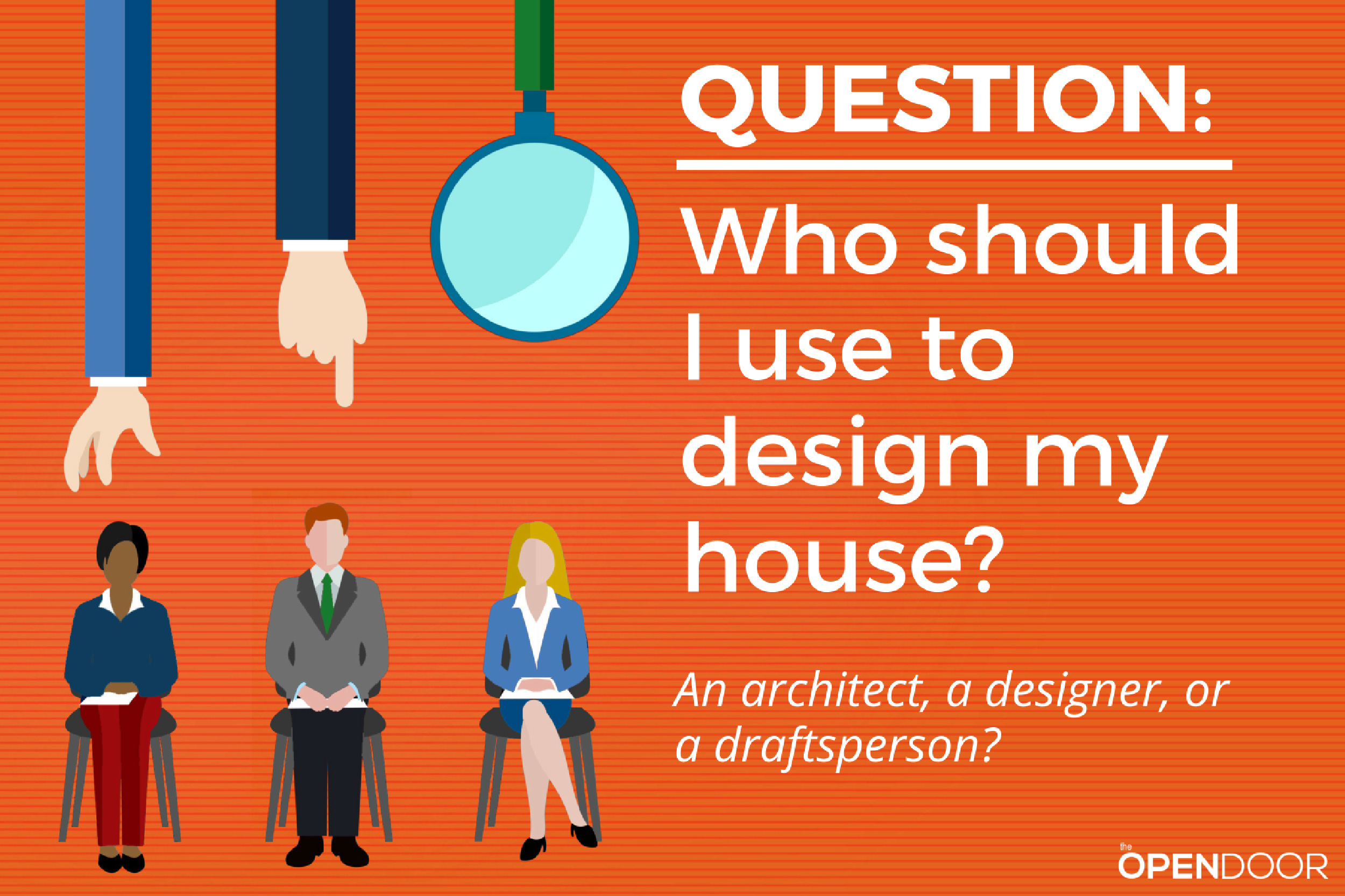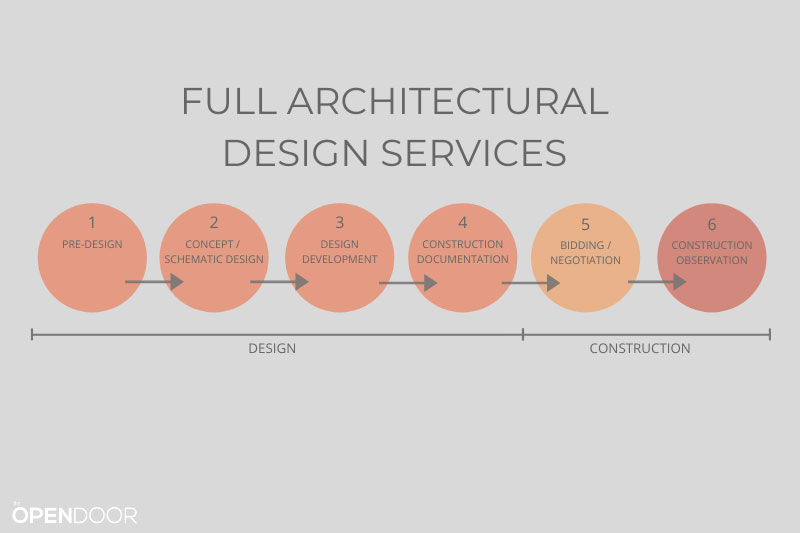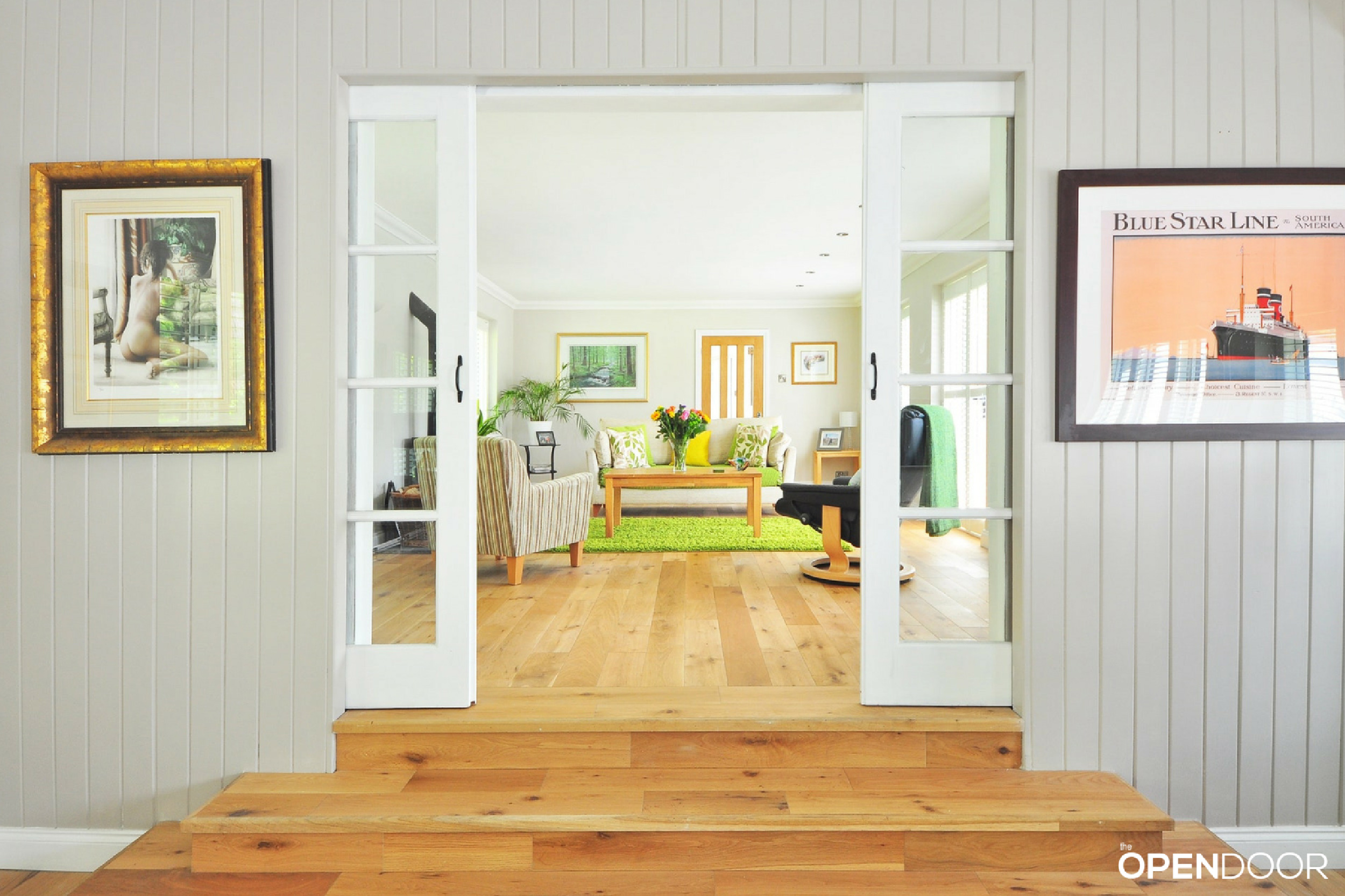Should I use an architect, a designer, or a draftsperson?
There is no right or wrong answer. What’s best for you may not be right for someone else. To make the best decision for your specific situation, having a good idea of how important design is to you, how big or small your project is, and how much money you can commit to the design process are all good to know ahead of time.
When it comes to designing your home, architects, designers, and draftspeople can all perform that role at varying capacities. But they each have different skills and will each perform the task differently.
Here are a few scenarios:
- If you have a small project that requires clear drawings for a contractor, a draftsperson can create working drawings for a relatively modest investment. If you are planning a bathroom or kitchen remodel, you could hire a draftsperson or work with an architectural designer to help you create the design. If it’s more complex, a designer or architect may be best.
- If you are at a conceptual stage and want someone to translate your design ideas into drawings, an architectural designer or architect are good options. They both can take your desire and create a drawing that incorporates your ideas into a cohesive design.
- For any project that requires planning department approval or has an in-depth drawing review process, it´s usually wise to consult a licensed architect. While many agencies require an architect´s stamp on drawings, not all do and there are many certain situations that get you off the hook. When you invest in an architect, you get a committed professional on your team. While the cost is certainly higher than a designer or draftsperson, by investing in an architect, you ensure that your project will be built to current codes, be well-coordinated, have a cohesive look, and be structurally sound. An architect is capable of doing the design work or taking the work of an architectural designer, and creating all the working drawings as well as overseeing the entire project acting as your advocate during construction and making sure the project gets built properly.
To help you make a more educated decision about whom you should work with to design your house, below are descriptions of who architects, designers, and draftspeople are, including their education and experience levels and their design and project capabilities.
A Registered Architect
A registered architect is a licensed design professional with extensive education, training, and licensing. They are legally responsible for all work they perform.
For architects to legally use the title “registered architect” in the United States, they must meet the following:
- minimum education, training, and licensing requirements (with few exceptions):
- graduate from an accredited university with an architecture degree (usually 5-6 years of study)
- complete a minimum amount of on-the-job experience (usually the equivalent of 2 years’ work)
- pass numerous AREs – Architectural registration exams administered by NCARB (at least 7 exams)
- take a certain number of continuing education courses each year to maintain a license
Typically, architects learn about design and problem-solving in school, where they take various courses in building systems, processes, and design. During the extensive on-the-job experience, they learn more about how buildings are put together.
As highly educated and trained professionals, more is legally expected of them, which increases their risk and exposure to liability. Architects are responsible for protecting the health, safety, and welfare of the public. By stamping architectural drawings upon submission to the local jurisdiction, they are making this pledge.
The fact that architects are licensed design professionals (and is held legally responsible for their actions) is the main difference between them and other design professionals.
An Architectural Designer
Where as architects are licensed design professionals, architectural designers are not. Architectural designers are one step below an architect when it comes to expertise. Before architects pass the ARE’s and get licensed, they are architectural designers.
As far as education, training, and licensure for designers go, there is no requirement. Usually, designers work hand in hand with architects in larger design firms creating and documenting design projects. It’s how they receive their on-the-job experience.
In the United States, a designer’s career path could have taken many forms. Here’s a few scenarios:
- There are designers who follow the same career path as architects, graduating from an accredited college and getting on-the-job training, but who for one reason or another, have not passed the AREs.
- This designer could be currently taking the exams (sometimes it takes people years to finish all the exams) and hasn’t passed them all yet.
- There are designers who, after graduating and working in a design firm, decide they don’t want to get licensed (not wanting the added responsibility and liability) and choose to continue their design career as an architectural designer.
- They may be a seasoned designer, having been in the architecture profession for many, many years and know a lot more than others about designing and building buildings OR they may have very well just come into the profession and have a degree in architecture.
- There are also designers who could have even taken an alternate path to becoming a designer, going to school for interior design, industrial design, or another design concentration. There are those who are even self-taught – schooling themselves in the theory and practice of design and learning to read and draw architectural drawings.
So as you can imagine, the skill level of a designer can vary significantly across the board. The education, training, and skill level of architectural designers varies drastically across the board from one designer to the next.
The biggest difference between architects and designers is still the fact that they cannot provide a set of stamped documents to the building department, which are sometimes required by various jurisdictions to get a building permit for a construction project.
As we mentioned before, the term “registered architect” is highly governed. So, a designer cannot call himself an “architect” or even “intern architect” without risking getting reprimanded by his or her state architect’s board (getting fined or putting his future license in jeopardy).
We’re not saying that architectural designers aren’t capable of doing a great job designing a project, some can – and can do it as well if not better than an architect – but they just can’t call themselves “architects” and not all of them are alike in their capabilities.
A Draftsperson
Like architectural designers, there is no education, training, or licensing requirement for draftspeople.
Draftspeople can perform some of the tasks that architects or designers do, but not all. And draftspeople probably don’t have design education or experience, but they are highly proficient in using computer aided design & drafting software (CADD) to create architectural drawings for construction.
Some draftspeople have formal education, some don’t. They may have obtained certificates, diplomas, or degrees in drafting, but they don’t have design training. Their exposure to design is usually by way of converting design drawings to construction documents on the computer.
What are the differences in their abilities?
An architect has the most education and experience in design and implementation. Their skills and expertise revolve around maximizing design opportunities, understanding building systems, navigating the complicated approvals process, and coordinating the efforts of various other professionals to ensure you house will be designed and built successfully. They are a great option for complex projects or ones where a well level of design is wanted.
A designer may have similar design education and experiences or they may not. It’s hit or miss with an architectural designer. If a designer was schooled in interior design, he or she may actually know more about color theory, furnishings, and decor than an architect would.
A draftsperson is a specialist in documentation and delivery. They are proficient at turning sketches, hand drawings, and the like into technical drawings for construction.
Both designers and draftspeople know how to draw and understand the construction of buildings enough to document them in drawing form but the extent of their knowledge of all the working parts of a house or building can vary. They can design to varying degrees, however, not to the same level as an architect.
The AREs that distinguish an architect from other design professionals do not measure design abilities. It tests on architectural principles and processes as well as technical knowledge related to health, safety, and welfare.
So in speaking strictly of design skills, an architect and designer may be fully capable of creating a great design for you. One just has a more holistic understanding of how buildings go together and the coordination involved to make it happen.
What does this mean for me?
Depending on your local jurisdiction and the size and complexity of your project, you may or may not be required to use a registered architect. The easiest way to find out if you’re required to is to call your local building department and ask.
If you’re not required to, then have more options and need to decide which type of design professional is best for your specific situation. You have to evaluate how complex your project is, how important the design is to you, how complicated the approval process is, and your own knowledge and capabilities. At the same time, you have to think about the benefits and value each professional can provide and the related fees associated with using them.
Your design means everything.
It’s your choice who you decide to work with. But we suggest making the decision based on the design capabilities of the person you choose to work with. Whether you choose an architect, designer, or draftsperson, make sure you select someone who can turn your ideas into a home.
Good design is important. Good design has the ability to transform people’s lives helping them live happier, healthier and fuller. Good design also improves the bottom line, creating opportunities to reduce construction costs and long-term maintenance and operating costs – not to mention increase your return on investment.
In short: Design has the power to make or break a project. If done well, it will turn a place where you live happily ever after. If done poorly, it can become a big money pit and lead to much dissatisfaction.






